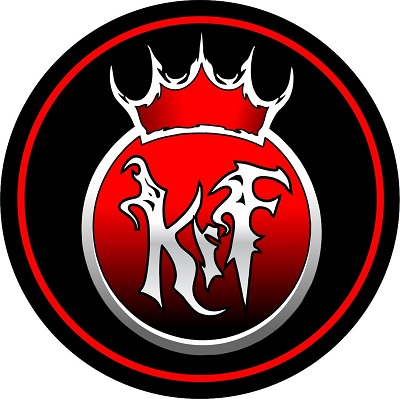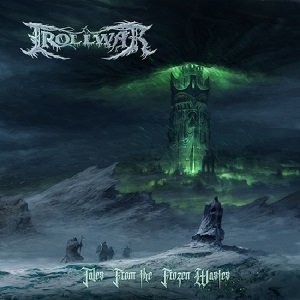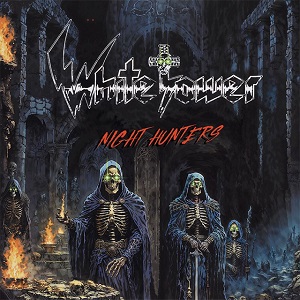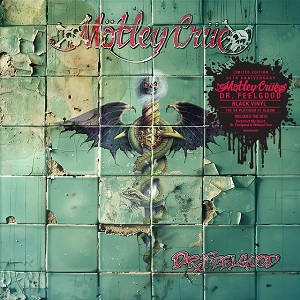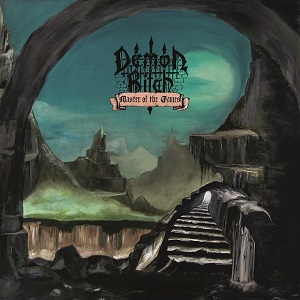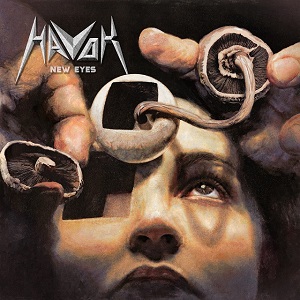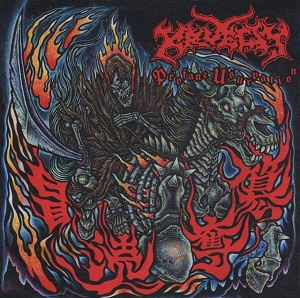DILLINGER ESCAPE PLAN - Escape, For Now?
October 13, 2016, 8 years ago

There's a track on Dillinger Escape Plan's latest album, Dissociation, called "Apologies Not Included" and that song title could act as the band's eulogy now that such things are needed given the group's impending "extended hiatus." From writing music that is - even in its most accessible forms - not exactly the pinnacle of easy listening, to performing in ways that have caused innumerable physical injuries, Dillinger Escape Plan has never apologized, not even to itself it seems. Even as Dillinger Escape Plan has rightly expanded past the initial mathcore parameters the band itself created (full disclosure: "mathcore" is a term I dislike with a very real level of animosity), Dillinger has expanded on its own terms. While "Setting Fire To Sleeping Giants", "Unretrofied", "Black Bubblegum" and "Milk Lizard" moved far beyond "Jim Fear", "43% Burnt", "Panasonic Youth" and "Party Smasher", they're the opposite side of the same, severed coin. Menace, technique, middle-finger attitude and maybe even some razor-wire anxiety coat all of Dillinger Escape Plan's various identities, to glorious, upending effect. "I always felt like people were at our shows to see us fuck up and not pull it off live," guitar player and founder Ben Weinman told me during a backstage interview in Montreal in 2011. "I felt that people were like, 'What the fuck is all the hype about this band?They suck.' They were our own shows, but I went out feeling like I had to win this crowd over."
Though two EPs and two splits preceded it, 1999's Calculating Infinity is where the story truly begins for Dillinger Escape Plan. As its title suggests, Calculating Infinity attempts the impossible over its 11 songs, the band soaring with the adrenaline-on-adrenaline of so many of the best debut records. Ironically, this scribe's initial reaction on hearing Calculating Infinity in 2002 was disgust: "Forget these guys," I said, though expletives probably made up most of the sentence if we're being honest, "this music doesn't even make sense." It's a criticism that's been leveled often at the group, the listener overwhelmed by the hailstorm of sound that is any of the band's albums. But appreciating a Dillinger Escape Plan record is like learning a new language: at first everything's blurred - pieces running into each other - without any sense of cohesion or understanding. And yet, as you slowly learn each individual part, and appreciate those parts in isolation, the process has begun. And when you hear all those fire-on-fire individual parts in succession and then realize they're all actually connected, making up an impossibly explosive whole... your world has changed. Massively. That’s the lesson Calculating Infinity imparted.
2004's Miss Machine is Calculating Infinity's 'proper' follow-up, even if the Mike Patton-fronted version of Dillinger Escape Plan released the, literally, insane Irony Is A Dead Scene in 2002. Miss Machine took Calculating Infinity's unhinged, unpolished force and used it for a good part of the record, with "Panasonic Youth", "Sunshine The Werewolf" and "We Are The Storm" showing their incisor teeth and challenging even Calculating’s "Sugar Coated Sour". "Panasonic Youth" and "Sunshine The Werewolf" especially stood out though, both songs possessing mad, in both senses of the word, cacophonies within them, songs within songs.
Don't believe me? Go find your copy of Miss Machine. Head over to 1:18 of "Panasonic Youth" and let it play to the end. In that span, the technique and attitude we talked about above come raging out, without reserve. When vocalist Greg Puciato screams out, "The paragraph has never been so empty!" and then "Evolution gave us a clock that's always winding down!", genuinely corrosive moments are happening. This is the new noise, Refused undoubtedly would have conceded. And when you think that maybe the band's overreached, and put the album's best song first only to disappoint us all, "Sunshine The Werewolf" begins, immediately getting right in your face. While the song is strong, it's at 1:26 that it takes a turn for the sky, the track looking upwards and never coming back down. At that moment, and until "Sunshine The Werewolf"'s conclusion, Dillinger is an apocalyptic orchestra, its symphony playing while the apocalypse rains down, in whatever form it might hit you at that moment. When Puciato lets out that "DESTROYER!" cry, Dillinger has taken itself to previously unheard levels. The moment has become the centrepiece of the Dillinger live show, the catharsis that gives way after all the energy has manifested and flailed itself. Even the band realizes that the moment is something else entirely. “To me, that part has become an embodiment of what we’re trying to stand for,” Puciato said to me during a 2011 interview. “I feel like whatever it is, the word ‘destroyer’ at that moment in that song is something that has really resonated with kids. And it’s really cool to know that that’s happened. You can never do that sort of thing on purpose, and that’s what’s cool about it. We played a headline show in Chicago at one in the morning after opening for Deftones, and it was such chaos. The “Destroyer!” part... it becomes a fucking frenzy. And all the kids try to get to where they think the mic is going to be, and everybody knows that part and it’s so weird to think that there’s some sort of iconic moment that we’ve create.”
“Setting Fire To Sleeping Giants” also merits mention here. It comes before “Unretrofied” on Miss Machine, “Unretrofied” being a poppy song that shocked everyone on that first listen in 2004. But “Setting Fire To Sleeping Giants”, its title maybe even foreshadowing the shitstorm “Unretrofied” would cause, is Dillinger Escape Plan’s most attitude-laden moment, the track just unflinchingly not caring that a segment of the band’s fanbase that couldn’t see past Calculating Infinity was about to jump ship. “Setting Fire To Sleeping Giants” is a rock song with penultimate attitude and, in the end, its confidence brought in legions of open-minded people, people that far outnumbered those that went home and sulked because Dillinger was suddenly playing in 4/4 (for the briefest of moments).
2006 saw many Dillinger tours, but an opening slot for emo radio darling AFI may have led to some of the year's strangest moments. As hordes of hair-over-my-left-eye, Hot Topic faux-goths crowded large venues to see AFI, very few of them anticipated what was about to happen during Dillinger’s opening performance. And it all went down exactly as you’d expect. As Dillinger did its work, and ended its set with an especially savage version of “43% Burnt”, the emo kids literally had their jaws on the floor, not understanding what had just happened. AFI, facing the unenviable task of playing after Dillinger, began its set with frontman Davey Havok impressively back-flipping into the crowd: on that night, one couldn’t help but feel there might have been a sense of overcompensating on AFI’s part. But, hey, I wouldn’t want to headline over Dillinger (or Behemoth, while we’re on the topic) either.

2007 brought Ire Works, that title essentially summing up Dillinger’s mission statement. Its sleek and sophisticated album cover represented what was enclosed, Dillinger once again acting on its appetite for destruction with “Fix Your Face”, “Lurch”, “Party Smasher” and “82588” (metal fans, put your trivia to good use: what classic album came out on that day, 8/25/88?). “Black Bubblegum” and “Milk Lizard” were this record’s “Setting Fire To Sleeping Giants” and “Unretrofied” (mimicking the synchronicity, though not the style, of Metallica’s “Fight Fire With Fire”/“Battery” and “Fade To Black”/”Sanitarium” on Ride The Lightning and Master Of Puppets). But, like Miss Machine, Dillinger had also expanded to new areas entirely: electronic, Aphex Twin-obsessed glitches were around on “Sick On Sunday” and “When Acting As A Wave”, while “When Acting As A Particle” introduced itself with bells, strings and xylophone. Where Dillinger pushed its limits the most, though, was “Dead As History”, the song’s dark, isolating opening moments introducing song-writing - based in regret it seems, if the lyrics are any indication - that soars. “On your wings like an eagle, fly and touch the sun,” Iron Maiden un-ironically teaches all of us.
2010’s Option Paralysis and 2013’s One Of Us Is The Killer are both strong records in their own right, with Option Paralysis standing the test of time better than One Of Us Is The Killer, even if the latter is now only three years old. “Good Neighbor” (that intro!), “Gold Teeth On A Bum”, “Endless Endings” (impressively, Dillinger’s most aggressive song), “Room Full Of Eyes” and the unpredictably abrasive “Chinese Whispers” are high points in the Dillinger catalogue, making Option Paralysis probably the sleeper candidate for the group’s best record (even if your instincts immediately, and with wide-eyes, grasp for Miss Machine and Ire Works). One Of Us Is The Killer, despite its strengths – the perfect chorus of “Paranoia Shields”, the will-it-or-won’t-it of “When I Lost My Bet”’s initial moments, and the genuine scarring found on the rest of the record – is the Dillinger LP this scribe turns to least. Despite giving it major attention during the summer of 2013 when it was released, One Of Us Is The Killer was the first Dillinger effort not to truly ingrain its imprint. It’s not like there was any sort of artistic ennui happening, as the album is vicious. But, from this vantage point, there was a lack of I’ll-fucking-show-you moments of inspiration. But, hey, that’s just me. They can’t all be Reign In Blood, Left Hand Path or Demanufacture, right?
Which leads us to latest - and potentially last - Dillinger album, Dissociation. Firstly, it’s got to be said: this album hasn’t only recovered from whatever ailed One Of Us Is The Killer, it’s taken legitimate leaps into very real unknowns, which has always served Dillinger well. We’ve got no idea if Dissociation was written knowing that the extended hiatus was going to happen (the broken vase on the cover, sometimes used as a metaphor for a breakup, is a telling clue, as is the record title), but there’s a real sense of carpe-diem cohesion here, Dissociation feeling whole instead of a collection of individual songs. Even the ‘typically’ Dillinger tracks here - the virtuosic ones that sound like the factory machines that inspired Piggy of Voivod - seem particularly focused and impactful. “Wanting Not So Much As To” may be Dissociation’s “Endless Endings”, “Limerent Death” brings its high to equidistant lows only to raise them once again, while “Honeysuckle” tells us “I’m lying here wondering if I’m dying inside” and then supplies the soundtrack to that kind of sentiment, while even bringing back some of the jazzy moments that characterized Calculating Infinity and vocals that are reminiscent of Irony Is A Dead Scene. Elsewhere, “Manufacturing Discontent” is an anxiety-addled, swirling, tornado of thoughts (“In the eye of the tornado,” the classic Megadeth track goes). Where Dissociation especially separates itself, however, is the less abrasive material.
“Fugue” could be the soundtrack to the opening credits for a sequel to Fight Club if something of the sort ever gets made, this glitchy track channeling the mood of Chuck Palahniuk’s work massively. “Nothing To Forget” is equally as effective, the song “Setting Fire To Sleeping Giant”’s millennial younger brother who listens to only metal and Youth Code on his phone, Puciato’s vocals going to previously unexplored spaces and Weinman’s guitar playing using economy and efficiency to striking effect, until strings and porcelain auras unexpectedly make their way into the song and take it into wholly unexpected directions. And then there’s Dissociation’s title track. Nothing will prepare for you this thing.
“Dissociation” is everything Dillinger threatened to be in its quiet moments, like “Dead As History” but with an extra decade of life experience. Taking cues from Portishead, Faith No More, Telefon Tel Aviv and even The Beatles (those strings), “Dissociation” hits depths with all their brutish reality, while encircling them with fragile vocals. “Finding a way to die alone,” is the last line Puciato sings, on potentially the last Dillinger Escape Plan album. If this band’s life-cycle truly is over, then that’s a literal goodbye on the most epic of levels… as epic as “Sugar Coated Sour”’s hello on Calculating Infinity two decades before it, though with completely different mannerisms. Birth School Dillinger Death?
As these now more than 2,000 words begin to conclude, there’s something we need to acknowledge here (and, no, it’s not the playful mocking that is spinning the Cursed, Unshaven and Misbehavin’ 7”, a record that hilarious came with an instruction sheet). It’s that when you walked into a Dillinger show, even before the band’s massive, flailing-in-all-directions performances began, you felt a real connection with the strangers in the venue with you. Even if you didn’t talk to them and never saw them again, there was something that immediately created a kinship between you and everyone else in the room: the fact that each person at the show understood - and had invested the time to understand - Dillinger Escape Plan’s technical, difficult music. That, right there… that bonds, because Dillinger records are ugly, beautiful, beasts to love. And love these records genuinely, we do. "We didn't make this music with the intention of marketing it to a lot of people," Weinman said in a recent interview, acknowledging his fanbase’s appreciation and understanding of his, and the entire band’s, craft. Without a doubt, it’s an acknowledgement that’s appreciated by the faithful.
Goodbye, Dillinger Escape Plan. It’s been one hell of a ride.

